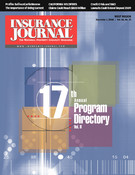Contractual Limitations Provisions in Insurance Policies: What Every Agent and Broker Needs to Know
Generally, the statute of limitations for the breach of an oral agreement is four years. However, a shorter period is mandated by California Insurance Code Section 2071 for all policies containing fire coverage (which would include most homeowner policies, all FAIR plan policies, as well as most commercial property and casualty policies). Section 2071 requires that those policies include a one-year suit limitation clause requiring that any suit or action on the policy be commenced within 12 months after inception of the loss. Similar suit limitations provisions can be found in other policies, as well.
The seminal case interpreting the one-year contractual limitations provision is Prudential-LMI Commercial Ins. v. Superior Court (1990) 51 Cal. 3rd 674. In Prudential-LMI, the California Supreme Court held:
The one-year suit limitation provision applies regardless of whether or not the insurer has been prejudiced by the insured’s delay in filing the lawsuit. Unlike notice conditions in insurance policies (where an insured’s delay in providing notice must be shown to have prejudiced the insurer), nothing more than the passage time need be shown to bar a lawsuit. State Farm Fire & Cas. Co. v. Superior Court (1989) 210 Cal. App. 3rd 604, 612.
Moreover, the one-year limitations provision is not reciprocal: It applies only to claims by the insured. The contractual limitations provisions does not limit the time within which an insurance company can sue the insured to recover overpayments or payments under a reservation of rights. California Union Ins. Co. v. Poppy Ridge Partners (1992) 224 Cal. App. 3rd 897, 903.
The one-year limitations period begins running when the loss first manifests itself. In determining the date of loss, the court has adopted an objective test. “Inception of the loss” is not necessarily measured by the date of the occurrence. Rather, it is measured from the date when a reasonable person would be aware of damage that deviates from what a reasonable person would consider normal “wear and tear.” Prudential-LMI, supra, at 687.
For some occurrences, such as an automobile collision, the inception of loss and the date of the occurrence are probably one and the same because most of the property damage would be immediately observable. For other occurrences, such as an earthquake, there is frequently latent damage to a structure that might not be observable until months, or even years, after the date of the occurrence of the physical event causing the loss.
Note, however, that there is a division of authority between California courts on the issue of earthquake damage. The most prevalent view was articulated in Capsinallis v. Allstate Ins. Co. (2002) 104 Cal. App. 4th 667, which held that “inception of the loss” cannot be determined solely by the date of occurrence of the physical event causing the loss. On the other hand, in Sullivan v. Allstate Ins. Co. (Central District of California (1997) 964 Fed. Supp. 1407, 1412, a federal court applying California law held that “in the context of a loss caused by a single catastrophic event such as an earthquake, the date of loss can only be the date of that event.”
The California Supreme Court in Prudential-LMI rejected the notion that the limitations period does not begin to run until the insured has actual knowledge of appreciable damage. For example, the limitations period is not tolled merely by the fact that the insured rented out the property and hence was absent from the premises while the loss was developing. Abari v. State Farm Fire & Cas. Co. (1988) 205 Cal. App. 3rd 530. The critical consideration was held to be not the subjective knowledge (or lack of knowledge) of the insured, but, rather, when a “reasonable person” would be aware of the damage.
At least one case has suggested that what constitutes “appreciable damage” may differ depending upon whether the policy is an all-risk policy, or a specified peril policy. In Central National Ins. Co. v. Superior Court (1992) 2 Cal. App. 4th 932, the court held that where a specified peril policy is involved, the limitations period does not begin to run until the insured should have known that the damage to his or her home was caused by a peril covered by the policy.
The limitations period can begin to run even though the insured may not be aware of the full extent of the damages. The test is whether the insured should have discovered the damages through the exercise of reasonable diligence. For example, in Magnolia Square Homeowners’ Association v. Safeco Ins. Co., a condominium development experienced extensive water leakage problems in 1978. In 1981, the developer retained a civil engineer who examined the building and identified a number of items of damage, and also noted that there were “likely other adverse conditions which a more complete and technically exhaustive inspection might reveal.” In 1982, the Homeowners’ Association retained a contractor to complete certain repairs, and during the course of these repairs, additional damage was discovered. The court applied the one-year suit limitations provision to bar the insured’s claim for coverage of the construction defects. The court rejected the insured’s argument that, although its members had knowledge of some problems with the property, they did not realize the full extent of the problem, and therefore were entitled to delay reporting the loss. In rejecting that argument, the court stated:
Additionally, individual portions of the same loss will not be separated out to find different manifestation dates. In Larkspur Isle Condominium Owners’ Assoc. v. Farmers Ins. Group (1994) 31 Cal. App. 4th 106, the insured became aware in 1981 of water damage caused by leaking roofs and walls. In 1985, a policy was issued to the insured that excluded coverage for losses to the interior of a building caused by rain. In 1986 or 1987, the insured learned that there was potentially hazardous asbestos material in the ceilings and that rain water damage to the ceilings might result in a release of the asbestos. At that point, the insured notified the carrier and sought coverage for the costs of abating the asbestos-containing ceiling materials. The insured argued that although there was observable water damage well before the policy period, damage to the asbestos-containing ceiling materials could be segregated from the non-asbestos damages. The court rejected the insured’s argument and stated that the water damage was a loss-in-progress when the insurance policy was issued in 1985, and, consequently, the insurer on the risk at the time of the appreciable damage is responsible for the entire loss, including the later-discovered asbestos damage.
Moreover, awareness of the loss, not awareness that the loss may be covered, commences the running of the limitations period. Thus, in Lawrence v. Western Mut. Ins. Co. (1988) 204 Cal. App. 3rd 565, the court held that the limitations period is not delayed until the insured consults an attorney and is advised that the loss may be covered by the insurance policy.
The contractual limitations period is equitably tolled while a claim is being considered by the insurer, i.e., from the time the insured files a timely notice, pursuant to policy notice provisions, to the time the insurer formally denies the claim in writing. This tolling rule applies to first party property claims under both commercial and homeowners policies. San Jose Crane & Rigging, Inc. v. Lexington Ins. Co. (1991) 227 Cal. App. 3rd 1314.
The limitations period is tolled until the claim is formally denied. To begin the clock running again, (1) the denial must be unconditional, and (2) it must be in writing. A mere verbal denial of the claim has been held to be insufficient.
This point is illustrated by Alaberti v. Allstate Ins. Co. (1999) 74 Cal. App. 4th 138. In that case, the insurer issued a check to the insured bearing the notation “paid in full,” and the adjuster made repeated oral statements to the insured that the carrier would not make any additional payment. The trial court granted judgment in favor of the insurer, finding that nothing that the insurer did or said could have led the insured to conclude that the carrier had not made a final decision on the claim. The Court of Appeal, reversed the trial court, and held that the insurer must deny a claim in writing to halt the equitable tolling period.
To be considered “unconditional,” an insurer is not required to have taken a “firm, unmovable position.” Liberty Transport, Inc. v. Harry W. Gorst Co. (1991) 229 Cal. App. 417. For example, the failure to use words “denied” or “denial,” does render a denial equivocal, nor does a mere statement by the insurer of a willingness to reconsider its denial. Migliore v. Mid-Century Ins. Co. (2002) 97 Cal. App. 4th 592, 605.
On the other hand, an insurer’s letter refusing further payment is an unequivocal denial, even though the letter invited the insurer to submit additional information relevant to the claim. Id. Moreover, an insured may not reactivate the tolling period by merely requesting the insurer to reopen the claim file and to make additional payments. Marscellis v. Allstate Ins. Co. (2004) 121 Cal. App. 4th 122.
There is a split of authority whether the one-year limitations provisions applies to both contract and tort actions. In Frazier v. Metropolitan Life Ins. Co. (1985) 169 Cal. App. 3rd 90, the court held that contractual limitation provisions do not apply to a bad faith action against the insurer for improper claims handling, because such actions are not based “on the policy” but, rather, on an obligation imposed by law (the implied covenant of good faith and fair dealing).
By contrast, Prieto v. State Farm Fire & Casualty Co. (1990) 225 Cal. App. 3rd 1188, broadly construed the one-year limitations provision to apply to both contract and bad faith actions arising out of the handling and processing of claims, since such actions would be “on the policy.”
Topics Lawsuits California Carriers Profit Loss Property Homeowners
Was this article valuable?
Here are more articles you may enjoy.


 LA Fire Survivors Got a Rude Surprise That Could Hit More Americans
LA Fire Survivors Got a Rude Surprise That Could Hit More Americans  Thumbs Down on SELF DRIVE Act as Written, Says Industry Trades
Thumbs Down on SELF DRIVE Act as Written, Says Industry Trades  New York Governor Hochul Vows to Tackle Insurance Affordability, Litigation and Fraud
New York Governor Hochul Vows to Tackle Insurance Affordability, Litigation and Fraud  Allstate Can Proceed With Recovery in Texas RICO Case: Fifth Circuit
Allstate Can Proceed With Recovery in Texas RICO Case: Fifth Circuit 


